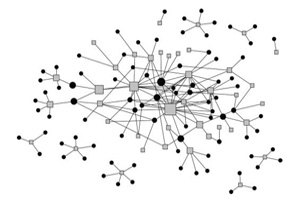Postdoctoral Research Associate
Arizona State University
Decision Center for a Desert City
Location: Tempe Campus
Full/Part Time: Full-Time
Regular/Temporary: Regular Fiscal Appointment
Position Type
This is a grant funded position. Continuation is contingent on future grant funding. Appointments are year-to-year, with subsequent renewal, based upon performance, the needs of the department, and availability of funding.
Job Description
The Global Institute of Sustainability (GIOS) and the Decision Center for a Desert City (DCDC) at Arizona State University seek a Postdoctoral Research Associate in the decision making under uncertainty related to water sustainability and urban climate adaptation.
Expertise in one or more of the following research areas is highly desirable:
- decision making under uncertainty
- climate change uncertainties
- urban climate adaptation
- psychology of environmental decision making
- urban systems dynamics
- vulnerability, resilience and risk
- science-policy interactions and boundary organizations
- hydrological and water simulation modeling
Anticipated Start Date
July 1, 2012
Hiring Range
$38,000 – $42,000 annually depending on experience; plus benefits.
Minimum Qualifications
Earned Ph.D. at the time of appointment.
Desired Qualifications
Demonstrated experience in interdisciplinary environmental research, strong social science skills including quantitative and qualitative analyses and spatial analyses, and strong verbal and written communication skills.
Department Info
The Decision Center for a Desert City (DCDC) at Arizona State University (ASU) was established in 2004 by the National Science Foundation (NSF) to advance scientific understanding of environmental decision making under conditions of uncertainty. Bolstered by Decision Making Under Uncertainty (DMUU) collaborative groups funding from the NSF, “DCDC II” was launched in October 2010 and is poised to expand its already-extensive research agenda, further engage the policy community, and forge stronger ties between knowledge and action. In this second phase of DCDC funding, we will develop fundamental knowledge about decision making from three interdisciplinary perspectives: climatic uncertainties, urban-system dynamics, and adaptation decisions. Simulation modeling and boundary organization studies are cross-cutting themes and will be core DCDC activities.
To date, DCDC has produced: (1) a critical mass of basic research, including over 200 articles, books, and book chapters (65 of these appearing to date in 2010–2011); (2) WaterSim, a dynamic water-simulation model that serves as an important basis for stakeholder engagement and decision support, a point of articulation for interdisciplinary research, and an experimental setting to study decision making under uncertainty; (3) an extensive network of relationships with regional water managers and resource decision makers; (4) productive partnerships with research and education efforts affiliated with ASU’s Global Institute of Sustainability (GIOS), including the Central Arizona-Phoenix Long Term Ecological Research (CAP LTER) project, the Decision Theater, and the School of Sustainability; and (5) a significant and growing set of comparative and collaborative partnerships linking our Phoenix-based case study to water sustainability and urban climate adaptation efforts nationally and internationally.
As our mission has evolved to focus not only on water sustainability but also urban climate adaptation, DCDC researchers now work to develop and implement decision-support processes for environmental decision making. Through an integrated approach to research and education, DCDC trains a new generation of scientists who work successfully at the boundaries of science and policy. DCDC II continues to build bridges between science and policy to foster local-to-global sustainability solutions. For additional information about the Decision Center for a Desert City, visit DCDC.
Instructions to Apply
To apply, submit curriculum vitae, two research papers, a letter of interest, and the names, phone numbers, and email addresses of three professional references by email to GIOSjobs@asu.edu.
Application Close Date
Initial close date is December 31, 2011. Applications will continue to be reviewed until position is filled.
Background Check Statement
ASU conducts pre-employment screening for all positions which includes a criminal background check, verification of work history, academic credentials, licenses, and certifications.
Arizona State University is an Equal Opportunity/Affirmative Action employer.


